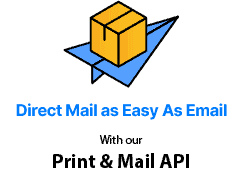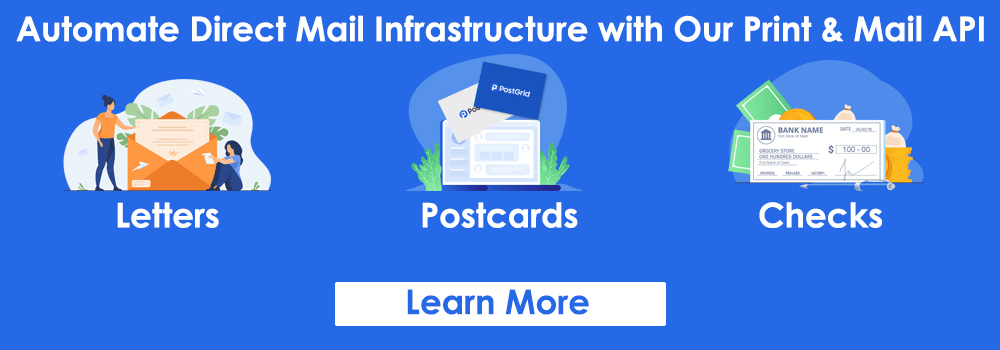FinTech Marketing Trends
FinTech Marketing Trends
FinTech seems to have reached its all-time high popularity in recent years, with more and more FinTech products and services being launched in the market. FinTech is all set to replace almost all traditional banking practices with a new, advanced, and superior alternative that includes everything from AI to blockchains.
FinTech marketing is one of the toughest marketing disciplines to master, largely owing to the fact that Finance is a distrustful industry. Apart from this, regular customers don’t know many of the standard banking terms, which effectively alienates them from the finance industry.

FinTech marketing must be cautious and prepared to tackle the problems associated with the finance industry. To ensure the maximum effectiveness of your FinTech marketing campaigns, you need to create quality content easily comprehensible for the reader and a superior user experience. Furthermore, it would be best to consider your audience and your goals before making a Fintech marketing strategy. Additionally, when defining goals, you should consider both short-term and long-term goals.
Ask yourself questions like who do you want to sell to? What problems are they facing? and can your product/service alleviate those problems? This article takes you through some of the leading FinTech marketing trends used by the top FinTech companies around the world. We also take you through the finer details of FinTech marketing involved in these latest FinTech marketing trends and also point out its significance. Furthermore, the article goes on to examine comprehensive Fintech marketing trends and strategies that combine various aspects, including the use of AI, the role of mobile and AI, along with personalization, UX, and much more.
10 Important FinTech Marketing Trends to Watch for in 2021
1. Data-Driven Tactics
The finance sector is and always will be dominated by numbers, and it is odd if you still don’t follow data-driven tactics for your FinTech marketing trends. It is high time that you let data power all your Fintech marketing decisions. A data-driven approach must be taken for all aspects of your FinTech marketing, doesn’t matter whether it is big or small. This means even your content needs to be data-driven which means that the content you use is in demand by the target audience. You can get your hands on the data from the customer profile or buyer persona you create for your business.
You can also collect the required data from your target audience, who have already brought a financial service or product from you, and use that data to convert them into return customers. The same logic can further be applied to your financial business’s targeting as well. You can use specific demographic data, market trends, etc., to zero in on the ideal customers for your campaign. More than half of your customers expect to have a personalized experience based on the data from their previous interactions. However, getting clean data is easier said than done, and you can keep your data clean with the help of AI-assisted tools.
2. Segment-Based, Targeted Content
Personalization is the key to every successful marketing campaign, and it holds true for FinTech marketing as well. The simplest and most effective way to personalize your FinTech marketing efforts is to personalize the content you use. As FinTech companies often have to deal with a broad range of demographics and firmographics, they must consider both before personalizing their marketing efforts. Even among the target audience, there are consumers who have different income levels, they may also have different financial needs/goals, and their budgets can vary. As a marketer, you must take into account all these factors before personalizing your Fintech marketing strategy.
Similarly, if your FinTech company is focusing on business audiences, there are a number of factors to take into account before you can personalize your marketing efforts. Different businesses that have different distinct market shares can be categorized based on that or you can categorize them based on the capital access of the businesses. Regardless of whether you are pitching your FinTech marketing to individuals or businesses, you will still need to come up with content personalized for them. Personalized content helps to establish that you can solve the client’s immediate problems, and by doing so, you can also create trust between you and your potential clients.
3. Significance of Customized Content
Content has always been at the helm of marketing, and it is an effective tool to get your point across to your existing and prospective clients. Content can provide value to your customers even beyond the product or service you sell. It can educate and innovate your target audience, and when executed correctly, a customized content marketing strategy can have a significant impact on your marketing goals. Using customized content that is segment-oriented allows you to connect better with your target audience and address their problems and pain points to implement an empathetic approach that solves their problem.
Again, it is important to remember that over 60% of consumers prefer to have their content customized to their unique requirements. Furthermore, customizing the content for your target audience also increases the likelihood of the consumer buying again for your FinTech company. You can see some of the best examples of customized content in Accenture’s banking blog and also in Cisco’s financial services blog. Take a look at these blogs to get a better idea of how you can customize your content and optimize it to better help the customers. That being said, the key is to come up with valuable content that can help the target audience in one or another.
4. Utilize Multimedia
It is no secret that the financial sector is perhaps the dullest and also the most confusing marketing sector today. At times, even people who work in the finance sector may not be entirely sure about a FinTech service or product. Multimedia is an ideal way to simplify how you convey financial services or products or even ideas to your customers. Multimedia can include anything from videos to infographics, and it is up to the marketer to choose the right multimedia format to be utilized in FinTech marketing. For example, you can use detailed infographics in your blogs that can make it easily comprehensible for your FinTech target market.
The use of multimedia is not just limited to infographics and videos either. You can even make use of custom GIFs that can explain what your product or service does for the customer. Tutorial videos are a great way of explaining how a FinTech product or service works, and you can even make use of attractive illustrations that can ensure the idea is conveyed comprehensively to the target audience. Budget planning videos can also come in handy to establish your authority over the subject and source reliable financial information while helping the viewer. Additionally, you can use multimedia, including videos, to highlight your cybersecurity features more convincingly.
5. Prioritize UX
User experience or UX is at the heart of any tech product out there. It is not enough that you create an advanced solution with state-of-the-art features and functionalities if the user can not easily access it. A user-first approach should be taken for every Fintech design in such a way that it is evident to the users that you genuinely care about their experience with your FinTech product/service. This means that any functionality that your FinTech product or service offers must be easily accessible for the user, and they should not have to go through every menu and sub-menu to find what they are looking for.
An important statistic that you should keep in mind is that a whopping 70% of millennials and almost half the people across all demographics already use mobile banking. This means that your FinTech product or service must be optimized for mobile devices. The best way to do this is to develop a fully optimized mobile app with advanced capabilities, or at the very least, you must create a minimalist mobile-first website. Regardless of whether the customer uses your mobile app or mobile website, the UX must take center stage and must be optimized for easy and intuitive navigation.
6. Employ Humanized Marketing
Marketing in the financial sector often ends up bland and boring to the point that one may feel like the marketing is being done by machines and aimed towards machines. You need to avoid sounding like a robot and make a genuine effort to connect with the customer. FinTech marketing you implement today needs to have humanized content that your target audience can relate with. Using humanized content will help you finally break away from the age-old rigidness associated with marketing in the finance sector. To do this, you need to communicate your ideas using the same tone as your target audience.
You may also consider using personalized direct mails for humanizing your FinTech marketing efforts. Direct mails, especially postcards, are most likely to generate an emotional response from your customers or potential customers as they are tangible. Personalization is quintessential if your goal is to humanize your marketing efforts. For example, consider sending birthday cards via direct mail to your target audience. Not only does it show that your business values its customers, but it also helps to form a long-lasting relationship with them. Additionally, you can make use of direct mail automation solutions such as PostGrid to fully automate your campaigns.
7. Avoid Blocking Your Content With Forms
Never ever block access to your content by placing a lead form or any kind of form for that matter in front of your content. You need to realize that the internet is full of information that it is virtually impossible to consume all of it, and your content is only a negligible part of it. Albeit the quality of the content can give you a higher hand, but that still does not save you from the fact that there are even more sources of information available to the user. Furthermore, the user values convenience over everything else and having to fill a form just to access content is considered an inconvenience by the majority of them.
So, when a user comes to your website or blog hoping to find information regarding a particular FinTech topic and find themselves confronted by a lead form, they are more than likely to click the back and continue to the next source. However, what you can do is give them access to a useful sample of the content, which is enticing enough to hook them. You can then use a micro smart form that collects just important details such as the user’s email address and their country. You can make use of AI to fill in demographic and firmographic details so that you don’t trouble the user and make them spend even more time filling the form.
8. Make Use of Social Media Influencers
In 2021, it is high time that you capitalize on social media influencers for your FinTech company. Although many businesses are already highly invested in influencer marketing, it is still in its infancy for the finance sector. Influencers and thought leaders play a pivotal role in humanizing your FinTech marketing and, by extension, your brand. One of the reasons why influencer marketing is a good choice for FinTech companies is that both regular buyers and business buyers generally tend to be more trusting towards influencers.
Influencers guarantee you a reach because they already have a fan following, and hence they can at least ensure that your message reaches a majority of their followers. Furthermore, influencers can communicate with the target audience in their language and convey ideas more accurately. The one thing that you have to be careful of is which influencer you select to represent your brand. It is best if you select an influencer based on the unique product or service you are selling. This is important because you want the relevant target audience to receive your message for the marketing effort to be worth it.
9. Adopt a Conversational Approach
For years the finance sector has used an authoritative and rigid tone in their communication, and this needs to change to a more conversational approach. This holds true for any and all content that you use, including website content, blogs, landing pages, emails, and so on. It is advisable that you also keep track of your social media interactions as well as any other channel of communication that your customer may use. The simplest way to ensure that you follow a conversational approach in your FinTech business is to write as if you are talking with a person, especially for social posts. Don’t forget to reply to any social media interactions such as comments and tweets concerning your brand to keep your engagements up.
10. Provide Free Tools & Resources
One of the most effective FinTech marketing trends that you can use to boost engagements is to offer free tools and resources to the customers that are useful in real life. Providing free financial service tools and resources is the best way to win future customers and retain the existing ones. The key to successfully implementing this is to create a tool or resource that is useful for everyone regardless of whether they are a customer or not. You can make use of AI and machine learning for implementing these tools in your mobile application. Some ideas you can consider for free tools include apps for share market investment, financial planning, budgeting, and more.
Conclusion
FinTech marketing trends have changed over the years, and it is essential for financial businesses to keep up with the changes in the industry so they reach out to them. The new-age FinTech marketing trends include everything from using data-driven strategies to providing free tools and resources to the target audience. Establishing trust still remains the biggest hurdle for FinTech companies, and it can be achieved by humanizing the marketing efforts.
Direct mails are an effective way of humanizing FinTech marketing as they have the ability to generate an emotional response from the recipient. With the help of advanced direct mail automation tools like PostGrid, you can easily and effectively implement direct mail campaigns for your business. Furthermore, systems like PostGrid come equipped with advanced address verification capability that ensures the maximum deliverability of your direct mails.
Ready to Get Started?
Start transforming and automating your offline communications with PostGrid
The post FinTech Marketing Trends appeared first on PostGrid.
Via https://www.postgrid.com/fintech-marketing-trends/
source https://postgridplatform.weebly.com/blog/fintech-marketing-trends6461200



Comments
Post a Comment